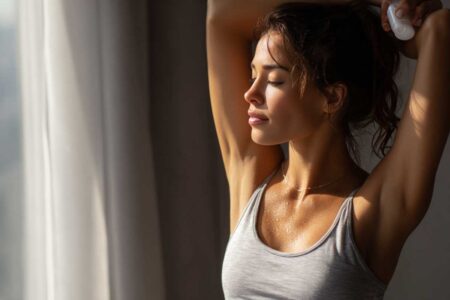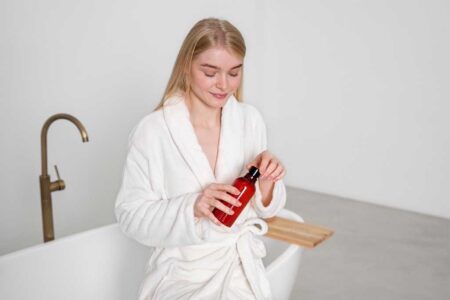
Cosmetic fragrances come on a broad spectrum. At one end, there is no shortage of perfumes, colognes and other products on the market that you’d describe as subtle, gentle, elegant even. The kind of clean, light fragrances that fly under the radar, that make the wearer smell good without screaming for attention.
Then at the other end, there are fragrances that simply cannot be ignored. We’ve all experienced them – a perfume that announces the wearer almost before they step into the room, that instantly turns heads and lingers long after they have left.
Big, bold and brassy, these are often described as ‘going out’ fragrances. The accompaniment to your most dressy of best outfits. A scent with a real sense of occasion.
As summer fades into autumn, we’re getting towards the season where fragrances at the brassier end of the scale start to feel more appropriate again. During the summer, we tend to lean towards lighter, zestier fragrances that complement the bright evenings and the uplifting scents of the outdoors.
But when the nights start to draw in, when we start to socialize indoors more, it’s almost as if our olfactory senses respond to the change in mood. Intense perfumes that cover us like an aromatic blanket feel comforting again. Or maybe it’s that, with heavier scents of open fires and rich cooking and bodies packed into small spaces to contend with, we look for something that cuts through.
‘Big’ scents have a long history in fragrance making. In fact, going back in history to less sanitary times when one of the main functions of a fragrance was to mask altogether less pleasant odors, big and intense was the only way to go.
They remain popular to this day. And yet big, bolder, stronger fragrances tend to be treated as luxury products, the choice of the connoisseur who knows when and how to handle such a beast, compared to the comparatively meek and mild offerings of most everyday products.
Certainly, the stronger the fragrance, the less advisable it is to go splashing it on liberally just to head to the shops or go into the office (not least because of the cost). There is a time and a place for a ‘going out’ fragrance. And there is a certain degree of cultured restraint required if you want to make the right kind of statement without kicking up a stink.
Here’s what you need to know.
Parfum: Fragrances gone large
First things first, it’s worth knowing a thing or two about what makes different fragrances more in-your-face than others. Ingredients play their part, as certain ‘notes’ (perfumer lingo for aromas) are naturally more intense and longer-lasting than others. That’s why a lot of ‘going out’ fragrances tend to be big on deep, rich, spicy aromas like musk, oud, sandalwood, tobacco leaf and so on.
But it also has a lot to do with concentration, or the percentage by volume of volatile (i.e. smelly) compounds in the product versus other ingredients (most often alcohol or a similar solvent).
So at the lower end of the scale, you have Eau de Cologne (or just cologne), which has between 3% and 8% aromatic content, followed by Eau de Toilette, which might have up to 15% volatile compounds. (And yes, cologne is an indicator of concentration, not a label for a men’s fragrance).
At the upper end, you have perfume. In its strongest form, known as Extrait de Parfum, these products can reach up to 40% concentration, although they are more typically 15% to 20% (you might see these labeled as Eau de Parfum).
Don’t assume you’ll love a perfume even if you’re a big fan of its less concentrated cousin
There are a few things to know about perfumes besides the fact that they smell stronger because they have more aromatic compounds in. As also mentioned above, they are more expensive, which is a direct consequence of the higher volatile compound content.
Higher concentration fragrances also behave differently. They are more oily, which affects how they feel when you wear them and also makes them less suitable for spraying or spritzing.
Concentration also changes the overall scent profile of a product. The ‘base notes’, or the longest-lasting scents, become more prominent the higher the concentrations, to the extent that cologne and a perfume with exactly the same ingredients can end up smelling quite different. Perfumers will often accommodate this by adjusting the recipes for different concentrations of products in the same range.
But from a wearer’s perspective, the point is that even if you love a particular cologne or eau de toilette, don’t automatically assume the higher concentration perfume will be a bigger, bolder replica that you can wear as your special occasion fragrance. You might find it smells quite different to what you expected. So always treat a perfume as a unique product.
With perfumes, less is definitely more
The golden rule with perfumes is that a little goes a long way – surprisingly so, when dealing with the highest concentrations. There’s a thin line between making a statement and attracting attention for all the wrong reasons. The heavy, intense notes that come to the fore in perfumes can become overbearing and cloying if you overdo it.
One safeguard you can fall back on is the extra cost of perfumes compared to other fragrance products. They tend to come in small bottles, and you wouldn’t want to be splashing it all over yourself at those prices. Luckily, a few discreet dabs is all you need.
Try before you buy
Finally, because of the extra cost involved, with perfumes, it’s even more important to be sure you pick a product you really love. The good news is you don’t have to take a potluck and hope for the best. You don’t even have to go to your nearest cosmetics counter and ask to try a few perfumes, for that matter.
Instead, you can order samples online and have the luxury of trying out new fragrances in the comfort of your own home. Women’s fragrance samples are convenient, low cost – and they let you trial even the most exclusive, head-turning fragrances before you make that big decision to buy.






